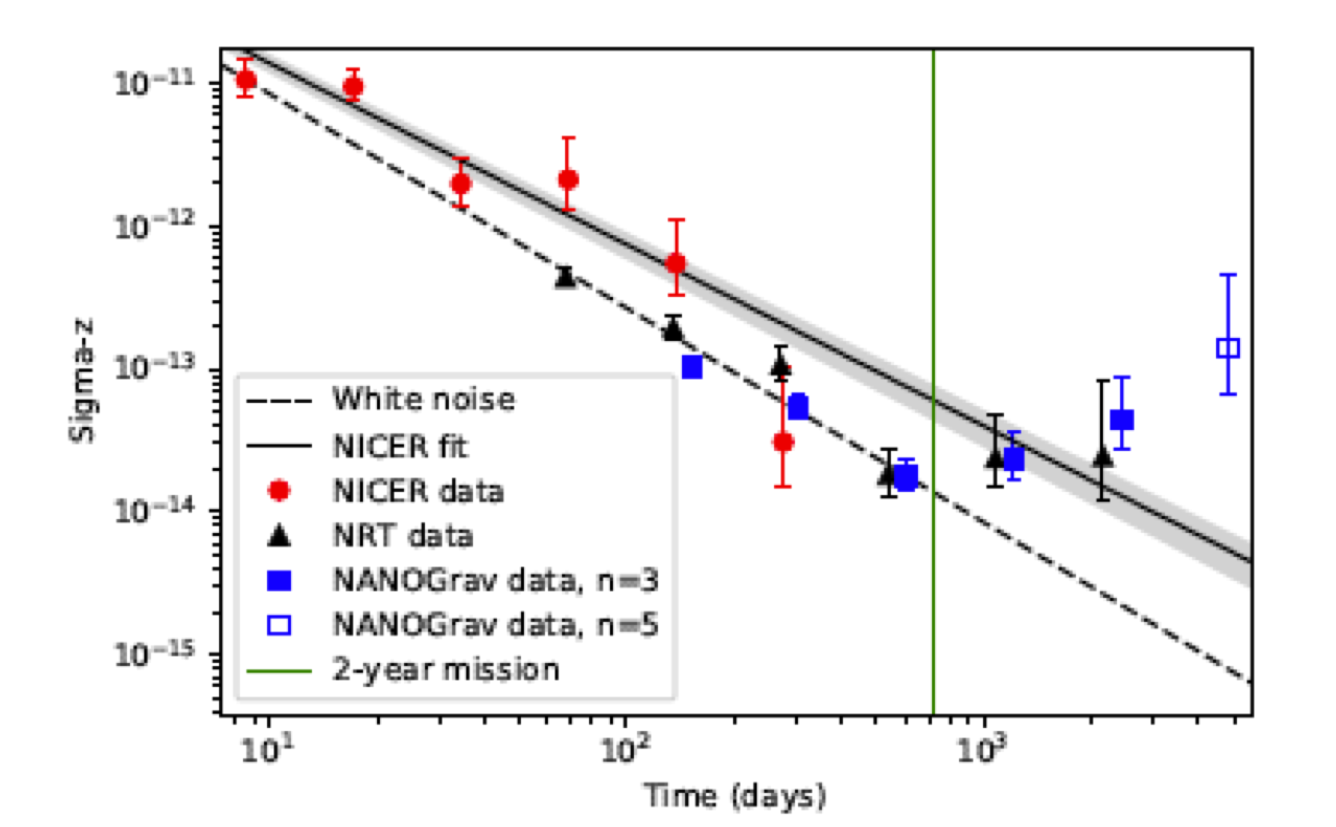NICER / ISS Science Nugget for September 6, 2018MSP timing stability rivals ground-based radio telescopesOne of NICER's major science objectives it to determine the long time timing stability of the pulses from millisecond pulsars. Some millisecond pulsars, such as PSR B1937+21, produce pulses so regularly spaced that they tick with stabilities that rival atomic clocks. For the first time, NICER will provide a measure of the long term stability of a handful of millisecond pulsars in the X-ray band. NICER observations of stability in a quantity called "sigma-Z" is shown in the figure below compared to radio telescope measurements. NICER's X-ray band measurements are immune from the propagation effects that limit radio observations on long time scales. NICER's measurements are on track to rival the most stable radio telescope measurements of pulsar spin stability.
In addition to providing valuable insight into neutron star dynamics, these measurements will help us better evaluate the utility of millisecond pulsars as high precision time standards and navigational beacons for deep space travel. NICER
|



